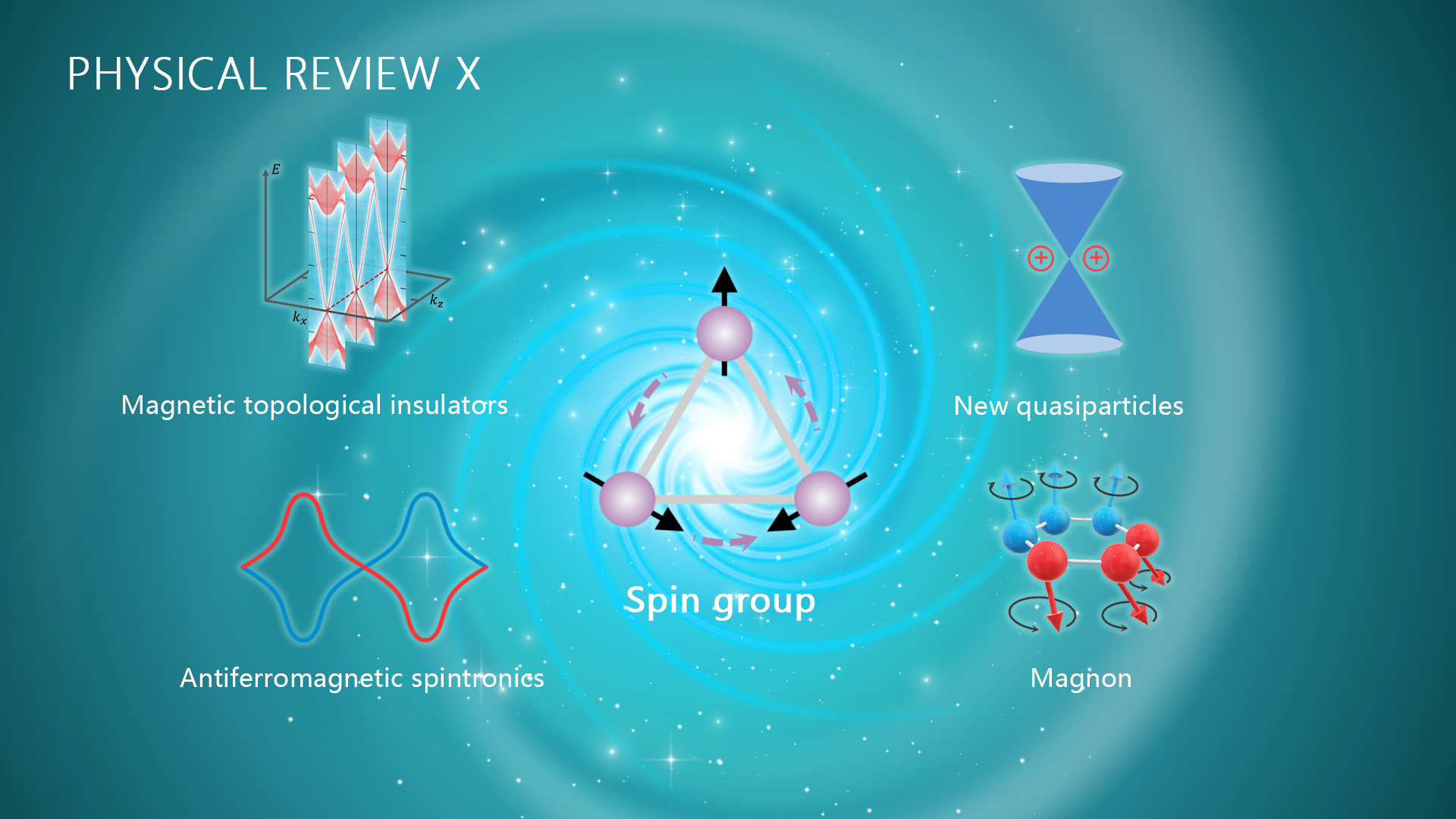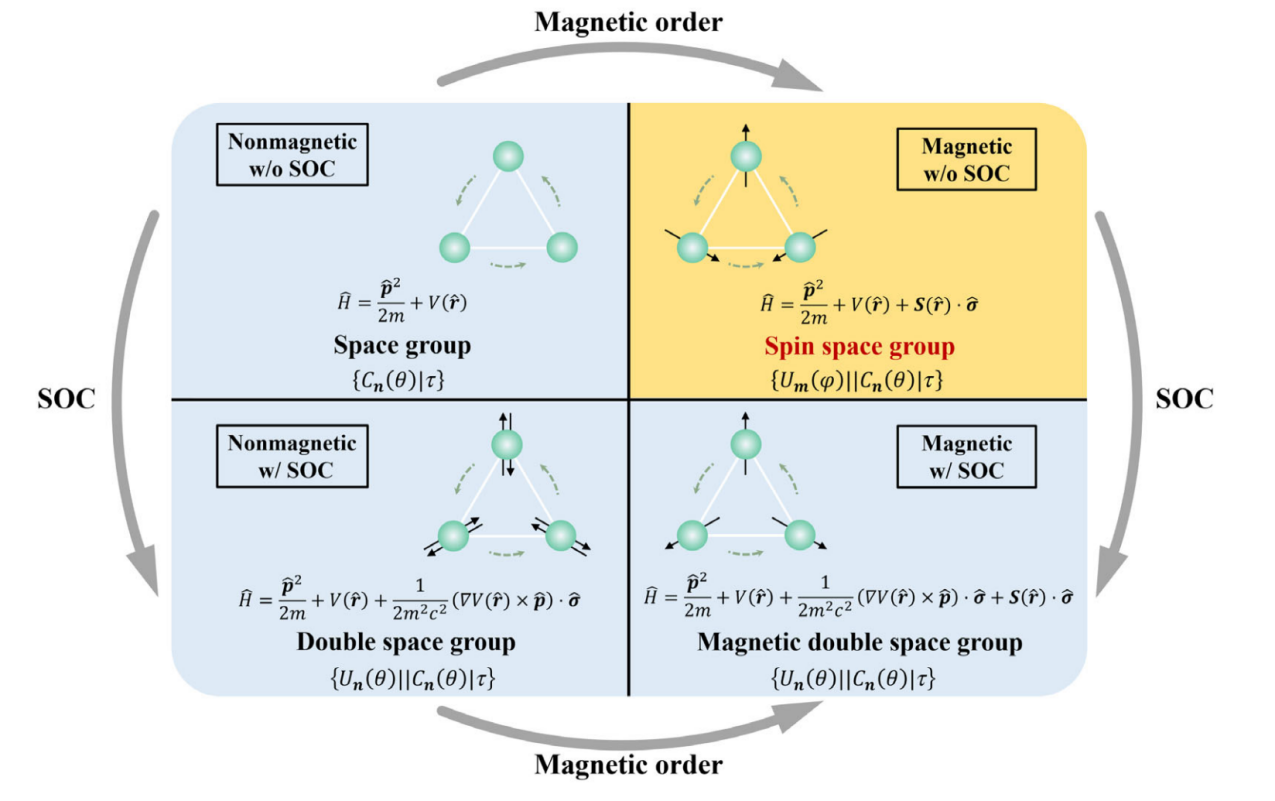Symmetry dictates how quantum-mechanical wave functions of elementary excitations behave, reflecting on all the physical observables. It is generally accepted that the symmetries of 3D solids are mathematically described by algebraic structures called crystallographic group theory. The theory successfully applies to a wide range of magnetic materials in relativistic quantum mechanics, known as magnetic groups. However, the symmetry description of magnetic materials in the nonrelativistic limit, known as spin groups, is seldom explored.

Associate Professor Qihang Liu’s research group of the Shenzhen Institute for Quantum Science and Engineering (SIQSE) and the Department of Physics at the Southern University of Science and Technology (SUSTech), in collaboration with researchers at Nanjing University and Peking University, has made substantial progress in the symmetry description of magnetic materials in the nonrelativistic limit.
Prof. Liu’s group has built a bridge between this powerful but largely overlooked symmetry group and modern condensed-matter physics. Their research results were recently published in the top journal Physical Review X, entitled “Spin-Group Symmetry in Magnetic Materials with Negligible Spin-Orbit Coupling”.
The researchers pedagogically elucidate that more discrete or continuous spin rotations under a spatial rotation are permitted in spin groups compared with magnetic groups, where the spin and spatial rotations are completely locked to each other. They then, in the language of group theory, derive the classifications of spin “point groups,” describing coplanar and collinear magnetic structures, and the irreducible core presentations of spin “space groups”. This illustrates more energy degeneracies that are disallowed by magnetic groups. These results directly give rise to the further discovery of emergent topological phases (states that are robust to perturbations) protected by new symmetries.
For future applications, the emergent topological classification is merely the tip of the iceberg, leaving fruitful physical properties induced by such an enhanced symmetry group to be further explored. Moreover, the researchers provide a significantly expanded material pool containing candidates with both light elements and nontrivial band topology for material scientists to explore the novel effects of materials as well as potential applications in spintronics.

Figure 1. Symmetry description of materials with/without magnetism and spin-orbit coupling
Graduate student Pengfei Liu is the first author of this paper. Engineer Jingzhi Han at Peking University is the co-author, while Associate Professor Qihang Liu at SUSTech and Professor Xiangang Wan at Nanjing University are the corresponding authors. SUSTech is the first affiliation of this paper.
This research was supported by the National Natural Science Foundation of China (NSFC) and the Key R&D Program of the Ministry of Science and Technology (MOST).
Paper link: https://journals.aps.org/prx/abstract/10.1103/PhysRevX.12.021016
To read all stories about SUSTech science, subscribe to the monthly SUSTech Newsletter.
Proofread ByAdrian Cremin, Yingying XIA
Photo By